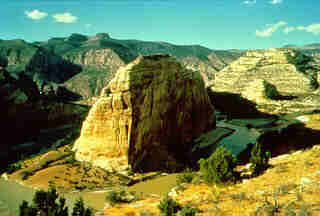Science

This is Echo Park, named by John Wesley Powell in 1869 during his first scientific expedition into the Colorado Plateau. It is here that the Yampa River, the last free flowing river in the Colorado River System, joins the Green River. This is home and critical habitat for the endangered peregrine falcon, bald eagle, Colorado pikeminnow, and razorback sucker. Indian rock art in Echo Park testifies to the allure these canyons and rivers had for prehistoric people. In 1825, William H. Ashley and his fur trappers were the first Europeans to enter Echo Park. In 1883, Patrick Lynch, a hermit, was the first to homestead in this canyon.
In his book, The Immense Journey, Loren Eisley wrote, "Once in a lifetime, perhaps, one escapes the actual confines of the flesh. Once in a lifetime, if one is lucky, one so merges with sunlight and air and running water that whole eons, the eons that mountains and deserts know, might pass in a single afternoon without discomfort."
- Agate Fossil Beds National Monument
- Dinosaur National Monument
- Edison National Historic Site
- Independence National Historical Park
- John Day Fossil Beds National Monument
- Field Division of Education series
- Museum Collections of Dinosaur National Monuement
- National Academy of Sciences Advisory Committee on Research in the National Parks: The Robbins Report
- NPS Paleontology Publications
- Natural History Handbook series
- Nature Notes--Crater Lake National Park
- Proceedings Of The First Park Naturalists' Training Conference
- Protecting Visibility in National Parks and Wilderness Areas (1993)
- Science in the National Parks (1992)
- Scientific Values of Public Parks
- Scientific Monograph series
- The Idea of Wilderness in the National Parks
- Transactions and Proceedings series
- Urban Ecology Series series
- Wildlife Management in the National Parks: The Leopold Report
- USGS Geology in the Parks
Related Links: